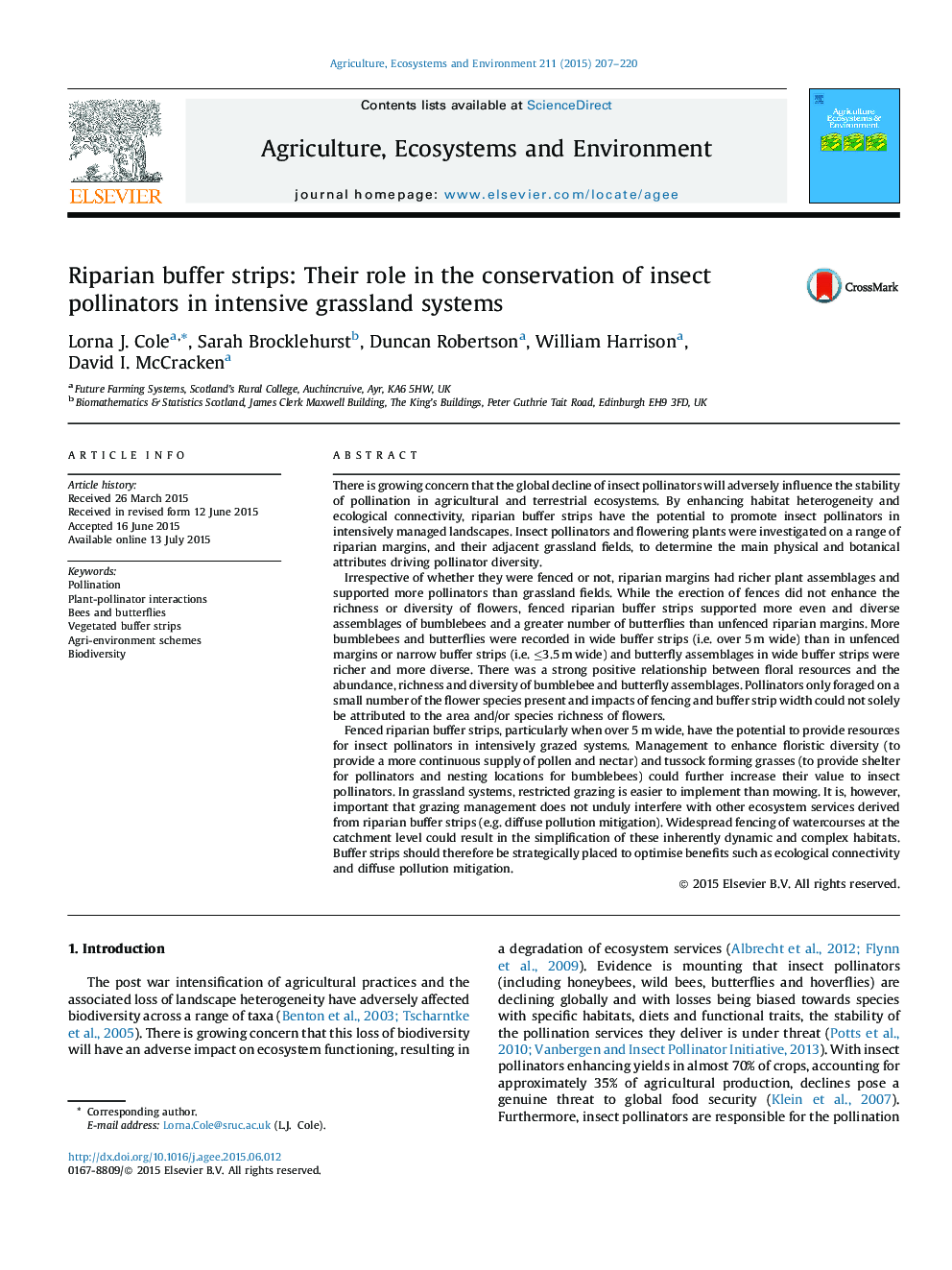| Article ID | Journal | Published Year | Pages | File Type |
|---|---|---|---|---|
| 8487678 | Agriculture, Ecosystems & Environment | 2015 | 14 Pages |
Abstract
Fenced riparian buffer strips, particularly when over 5Â m wide, have the potential to provide resources for insect pollinators in intensively grazed systems. Management to enhance floristic diversity (to provide a more continuous supply of pollen and nectar) and tussock forming grasses (to provide shelter for pollinators and nesting locations for bumblebees) could further increase their value to insect pollinators. In grassland systems, restricted grazing is easier to implement than mowing. It is, however, important that grazing management does not unduly interfere with other ecosystem services derived from riparian buffer strips (e.g. diffuse pollution mitigation). Widespread fencing of watercourses at the catchment level could result in the simplification of these inherently dynamic and complex habitats. Buffer strips should therefore be strategically placed to optimise benefits such as ecological connectivity and diffuse pollution mitigation.
Related Topics
Life Sciences
Agricultural and Biological Sciences
Agronomy and Crop Science
Authors
Lorna J. Cole, Sarah Brocklehurst, Duncan Robertson, William Harrison, David I. McCracken,
